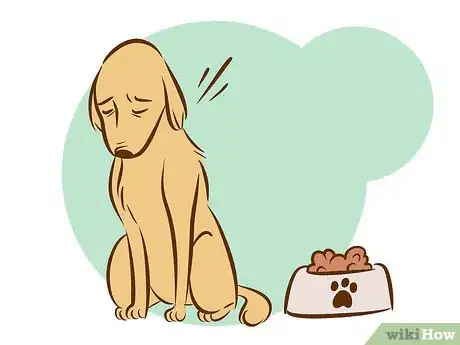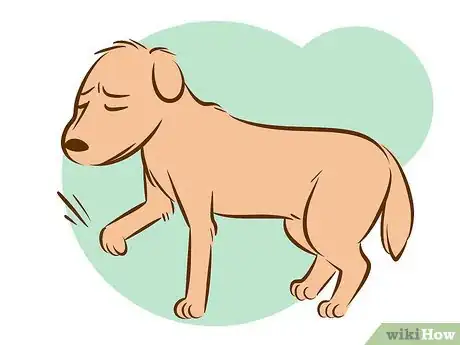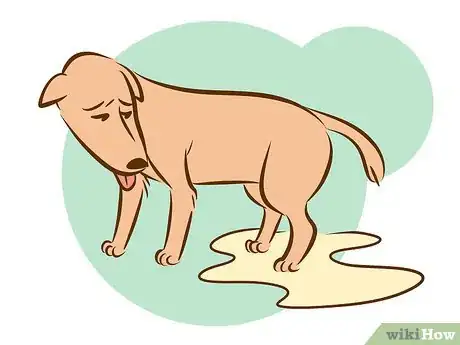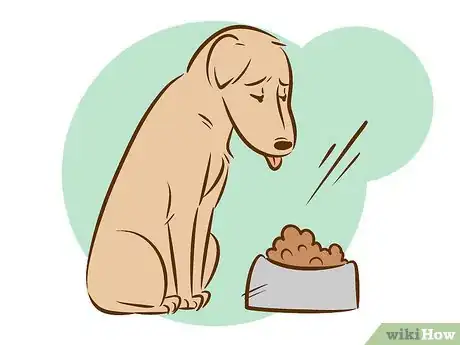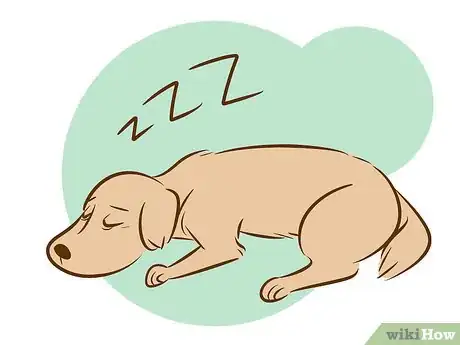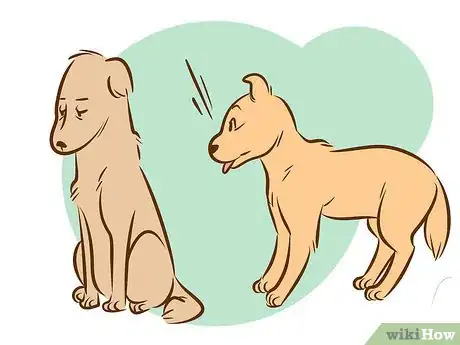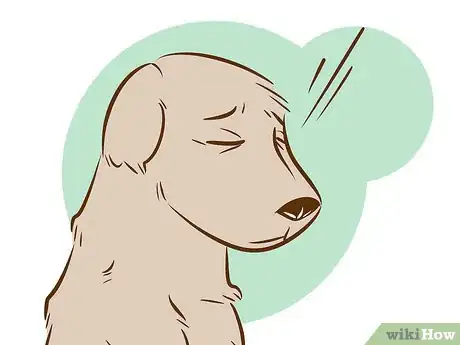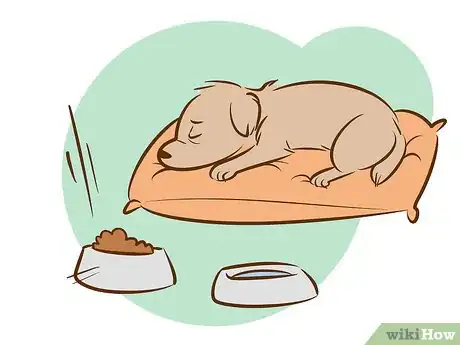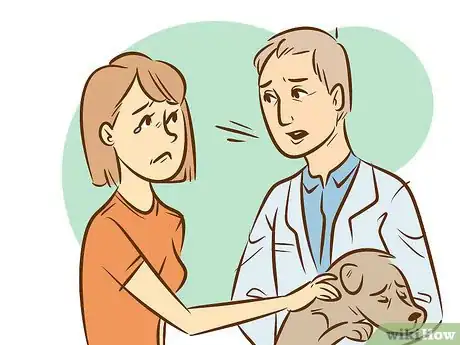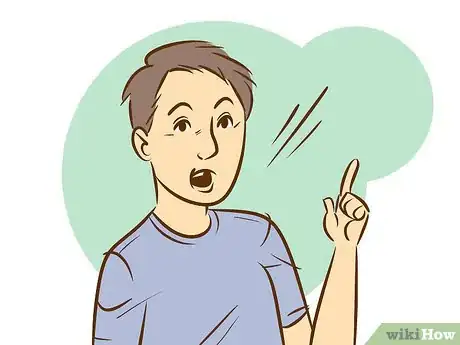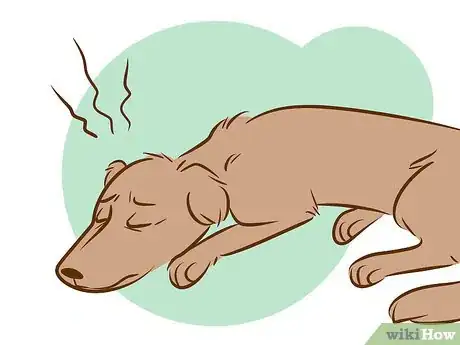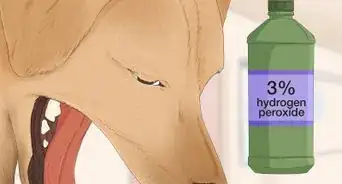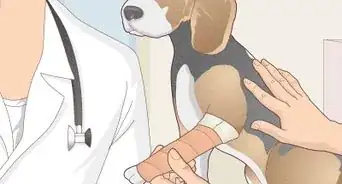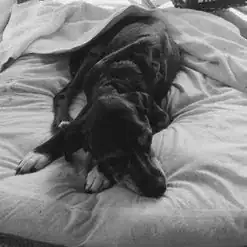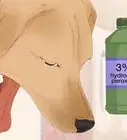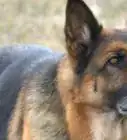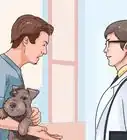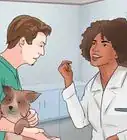This article was co-authored by Melissa Nelson, DVM, PhD. Dr. Nelson is a Veterinarian who specializes in Companion and Large Animal Medicine in Minnesota, where she has over 18 years of experience as a veterinarian in a rural clinic. She received her Doctor of Veterinary Medicine from the University of Minnesota in 1998.
wikiHow marks an article as reader-approved once it receives enough positive feedback. This article received 95 testimonials and 90% of readers who voted found it helpful, earning it our reader-approved status.
This article has been viewed 1,160,091 times.
Even after death, your love for your special pets lives on. However, death—even for dogs—is a reality everyone must face. In the finals days of your loyal friend and companion, knowing the signs that would tell you if your dog is dying can give you and your family enough time to prepare emotionally. Being aware of your dog's condition can also help you prepare for your dog's graceful, peaceful, and comfortable departure. Following the steps in this article will help to ensure your pup feels as little pain as possible.
Things You Should Know
- Check for major changes in your dog's respiratory system, digestive system, muscles, skin, and bathroom habits to see if they're reaching the end of their life.
- Slow movements, a change in appetite, increased sleep, and less social behavior could be signs that your dog is just aging—not dying.
- Discuss euthanasia with your vet if your dog is in a lot of pain.
Steps
Recognizing Fatal Signs
-
1Observe respiratory symptoms. Towards death, from a few days to a few hours, you will notice that the dog's breathing will become shallow, with very long intervals in between breaths. The normal resting breathing rate of 22 breaths/minute may drop to only 10 breaths/minute.
- Immediately before dying, the dog will exhale deeply. You may be able to feel your dog deflate as her lungs collapse.
- The dog's heart rate will drop from the normal 100 to 130 beats per minute to as low as 60 to 80 beats per minute, with a very weak pulse.
- In the final hours, you will observe that your dog breathes shallowly, and will not move anymore. Most of the time, your dog will only lie in a dark or hidden corner of your house.
-
2Recognize the digestive signs. If your dog is dying, he/she will show a very clear loss of appetite. There will be virtually no interest in eating and drinking water. As death nears, the organs like the liver and kidneys are slowly shutting down, making your dog lose digestive functions.
- A dry and sticky mouth, due to dehydration, can be observed.
- You may also notice vomiting. The vomit usually will contain no food, only frothy or sometimes yellowish to greenish colored acid, due to bile. This also comes as a result of loss of appetite.
Advertisement -
3Notice how its muscles work. Twitching or involuntary spasms of muscles can be observed as your dog weakens due to loss of glucose. There will also be a loss of response to pain, and loss of other reflex actions will be observed.
- When your dog tries to stand or walk, you will notice a lack of coordination and staggered walking. Possibly, your dog will not be able to walk at all. Your dog may lose consciousness or go into a coma immediately before death.
- Dogs that are nearing death and have suffered a chronic or prolonged illness may have a very skinny, emaciated look. Your dog may lose muscle mass, and the muscles may become very small and atrophied.
-
4Pay attention to their bathroom habits. Another sign is an uncontrollable bladder and anal sphincter control. Towards death your dog will urinate and defecate without control. Even the most disciplined or well-trained dog is likely to experience these symptoms.
- Urination will be uncontrollable and with little volume.
- Nearing death, the dog will pass liquid diarrhea that is sometimes foul smelling, and sometimes blood tinged.
- After dying, your dog will urinate and defecate for the last time because of total loss of muscle control.
-
5Assess the condition of your dog's skin. Skin will be dry and will not return quickly to its original shape when pinched. This is due to dehydration. Mucous membranes like gums and lips will be pale. When pressed, they will not return to their original pinkish color even after a long time (1 second is the normal return time for gums to return to the original color).
Recognizing Old Age
-
1Notice how speedy your pooch is. When your dog is slowing down in movements but is still able to eat, drink, walk, stand on its own, and can still respond to your calls, this is a sign of just plain old age. He's not suffering any particular pain, he's just growing old.
- Your dog can still do the things he/she enjoys, like walking around, being petted, playing, or socializing with other dogs, though in a more decreased frequency and intensity.
-
2Observe how much your dog eats. As dogs get older, they will likely begin to eat less than they used to. Older dogs generally expend fewer calories and require less food than energetic young dogs. It's nothing to be alarmed about—it's just a normal part of the aging process.
-
3Pay attention to how much your dog sleeps. An old dog will sleep more and more, but still being able to stand and move around and eat afterward. A dog who sleeps and doesn't move around and eat is very sick; a dog who sleeps a lot and still eats and seems social is aging.
-
4Watch how they act around other dogs. As dogs get older, they may show less interest in playing and socializing with other dogs. You might find that your dog gets overwhelmed or irritable in social situations more easily than before.
-
5Notice how your dog looks. A number of things will sprout up as your dog ages. Look for the following:
- Gray or white hairs appearing in the coat, especially on your dog's face.
- Parts of the body where friction is common getting bald or hairless. You may particularly notice this in the elbows, pelvic area, and butt.
- Dental problems, such as loosening or staining of the teeth. Some of your dog's teeth may fall out, or you may need to have them extracted by a vet.
-
6Keep your elderly dog comfortable. If your dog is already in this stage of old age, provide comfort by:
- Placing you dog in a well ventilated and warm room.
- Providing comfortable bedding to support your dog's joints and minimize pain.
- Providing (but not forcing) food and water.
- Spending time with your dog daily. Even if your dog is not up to playing or going for walks, he or she will probably still enjoy gentle petting and listening to your voice.
Putting Your Dog to Sleep
-
1Learn about the purpose of euthanasia. Euthanasia, or putting the dog to sleep, is a gentle and humane method of ending the life of an animal that is suffering. Vets perform euthanasia by injecting the animal with a high dose of an anesthetic that will gradually slow and stop the heartbeat. Its 3 main objectives are:
- The relief of pain and suffering of the animal.
- To minimize the pain, distress, fear, and anxiety the animal experiences before consciousness is lost.
- To bring about a painless and struggle-free death.
-
2Take time to think about putting your dog down. When caught in a situation wherein you have to decide if euthanasia is right, your pet's welfare should always come first. Try to remove all of your attachment, emotion and pride. Never prolong their life for your sake. It is more humane, and it is your duty as an owner to provide your dog a distress-free, and humane death. Ask yourself these questions:[1]
- Is the treatment for my dog's condition not possible anymore?
- Is my dog in pain and distress that is not responsive to drugs or pain killers?
- Is my dog suffering from severe and painful injuries from which he/she may never recover, like severe head trauma or severe bleeding?
- Has terminal illness reduced the quality of life for my dog to a point that he/she can no longer eat, drink, move, or defecate on his/her own?
- Does my dog have an inoperable birth defect that will give him/her a poor quality of life?
- Is my dog suffering from a contagious disease like rabies that can pose a threat to life to other animals and humans?
- Will my dog still be able to do the things he/she enjoys when treatment is available?
- If the answers to any of the questions above are yes, then it may be time for the dog to be humanely put to sleep.
-
3Talk to your vet about whether euthanasia is the best choice. They can properly assess the condition of your dog through tests and they will have the authority to tell you if the condition is still treatable or if your dog is near the end of its life. Your vet may be able to give you an idea of what kind of quality of life you can expect your dog to have if you choose to continue treatment.
- While your vet can offer advice, the decision to put the dog to sleep is still up to you in the end.
-
4Research the medical conditions that warrant euthanasia. In general, any condition that causes pain and suffering that cannot be easily cured or managed, be it acute or chronic, is a humane reason to put the dog to sleep. Here are some examples:
- Severe trauma from vehicular accidents.
- Serious diseases that are difficult to treat, such as severe liver disease or uncontrolled diabetes.
- End stage kidney failure, liver failure, and invasive or malignant tumors.
- Contagious diseases that are incurable and pose a threat to the life of other animals and humans (an example would be Rabies).
- Severe behavioral problems, such as extreme aggression that cannot be corrected with behavioral therapy, that can pose a risk to other animals, people, and the environment.
-
5Look for the signs that your dog is ready for euthanasia. If you observe these signs in your dog, call your vet immediately and bring your dog in for an exam. Euthanasia may be called for if:[2]
- The dog cannot eat, drink, stand or walk anymore, and has completely lost interest in these activities.
- The dog is urinating or defecating uncontrollably.
- Your dog's breathing is labored, and the pup is unresponsive to emergency procedures and drugs.
- There are signs of pain, such as crying or whining continually, due to a terminal illness or injury.
- The dog is bedridden and cannot lift his/her head.
- Your dog's skin temperature is very low, indicating that the organs are already beginning to shut down.
- The dog has large tumors that are inoperable and causing pain and immobilization.
- The mucous membranes, like the gums, are gray and dehydrated.
- Your dog has a very weak and slow pulse.
Expert Q&A
-
QuestionHow can I tell if my dog is in pain?
 Melissa Nelson, DVM, PhDDr. Nelson is a Veterinarian who specializes in Companion and Large Animal Medicine in Minnesota, where she has over 18 years of experience as a veterinarian in a rural clinic. She received her Doctor of Veterinary Medicine from the University of Minnesota in 1998.
Melissa Nelson, DVM, PhDDr. Nelson is a Veterinarian who specializes in Companion and Large Animal Medicine in Minnesota, where she has over 18 years of experience as a veterinarian in a rural clinic. She received her Doctor of Veterinary Medicine from the University of Minnesota in 1998.
Veterinarian Dogs exhibit signs like panting, shaking, whining, limping, lethargy, not eating, and being slow to get up, walk or go up stairs when they are in pain.
Dogs exhibit signs like panting, shaking, whining, limping, lethargy, not eating, and being slow to get up, walk or go up stairs when they are in pain. -
QuestionWill my dog die if it eats chocolate?
 Melissa Nelson, DVM, PhDDr. Nelson is a Veterinarian who specializes in Companion and Large Animal Medicine in Minnesota, where she has over 18 years of experience as a veterinarian in a rural clinic. She received her Doctor of Veterinary Medicine from the University of Minnesota in 1998.
Melissa Nelson, DVM, PhDDr. Nelson is a Veterinarian who specializes in Companion and Large Animal Medicine in Minnesota, where she has over 18 years of experience as a veterinarian in a rural clinic. She received her Doctor of Veterinary Medicine from the University of Minnesota in 1998.
Veterinarian Not necessarily. It depends on the amount of chocolate, the type of chocolate and the weight of the dog. Small amounts of milk chocolate for a large dog may just give it diarrhea. Dark chocolate (that has more chocolate in it) is more dangerous. Contact your veterinarian if your dog eats chocolate.
Not necessarily. It depends on the amount of chocolate, the type of chocolate and the weight of the dog. Small amounts of milk chocolate for a large dog may just give it diarrhea. Dark chocolate (that has more chocolate in it) is more dangerous. Contact your veterinarian if your dog eats chocolate.
References
- ↑ http://www.dogbreedinfo.com/timetoletgo.htm
- ↑ http://dogtime.com/when-to-say-good-bye.html
- The Merck Veterinary Manual 9th Edition (2005). Merck and Co. Inc. Whitehouse Station, N.J. U.S.A.
- PVET (Philippine Veterinary Drug Directory 14th Edition (2012). Medicom Pacific Inc.
- AVMA Guidelines for the Euthanasia of Animals 2013 Edition.
About This Article
If you feel that your dog may be dying, watch for signs of respiratory problems, such as labored breathing, shallow breathing, or low heart rate. When you feed your dog, observe it for signs of a loss of appetite, such as a dry, sticky mouth, or vomiting that doesn't contain any food. Keep an eye out for a loss of coordination and inability to control where and when they go to the bathroom, which are signs that your dog may be in their final days. As your dog gets older, know that they may become slower and require more rest than usual, but you can make sure they're comfortable and cared for. For advice from our veterinary reviewer on making the difficult decision to put your dog to sleep, keep reading.

